October 3rd, 2021
Book publishing is uniquely situated to publish books about itself. And it has been generous: there are several hundred titles that can be crowded into your reference library. So many different kinds of books: memoirs and histories, how-to guides, economic overviews, studies of the digital transformation of publishing, and some purely academic work.
This is a select guide to some 25 books about book publishing, by no means exhaustive, just the catalog of someone who loves publishing and is on a never-ending quest to better understand how it works. I focused mostly on trade publishing, where the stories are richer. My criteria for inclusion is this: for someone in publishing, or soon to enter publishing, can the book increase their understanding and appreciation of how the industry functions, and what their future role could be?
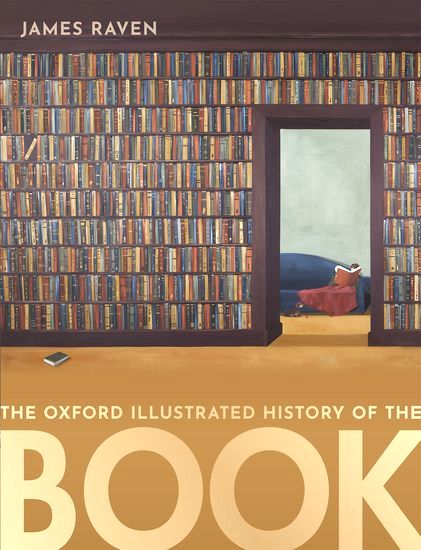
I sidestep many of the academic works about the history of publishing. And so, for example, a book like the Oxford Illustrated History of the Book (edited by James Raven, Oxford University Press, 2000) won’t be described here both because it covers books, not publishing per se, and much of it concerns the Renaissance and before.
I’m going to sidestep the “book arts” — books about books as art objects. I’ll leave aside guides to typography, design and book production: few people working in publishing are expected to know how to use Adobe InDesign or Adobe Photoshop to design, typeset and produce a book.
One more thing I’m steering clear of is the endless books on seeking success as a writer, and the numerous books on self-publishing, per se, though some of them are excellent.
Well, that’s what I won’t be covering, so let’s look at what I will.
Book Publishing Defined
When I tell people what I do for a living, and say “I work in publishing,” I’m always reminded that the term “publishing” means something different to people who aren’t in the business. Sometimes they’re thinking newspaper, magazine or journal publishing, sometimes blogs, sometimes software publishing or music publishing. Book publishing is but part of a larger publishing ecosphere (and the even larger entertainment industries, music, film, theater, videogames and the like).
But drilling down just on book publishing, an article I recommend to everyone who is trying to see the trees within the forest is Bill Kasdorf’s 2018 short post, Clearing up Publishing Classifications, “a handy reference to the various ways publishers of books and journals are classified.”
Kasdorf’s big bucket categories are trade, scholarly, educational and reference. Some publishers, he says, are in more than one. Scholarly is then dissected. He heads on from there into the types of publishing organizations and different types of publications. This creates a useful roadmap.
The All-Purpose Guides
There are at least a dozen books that distinguish themselves by offering a broad perspective on the industry. The starting point has to be Mike Shatzkin’s (and Roger Riger’s) The Book Business: What Everyone Needs to Know (Oxford University Press, 2019). It’s intended to be breezy, “a succinct and insightful survey of the industry in an easy-to-read question-and-answer format.” It succeeds.
Follow that with a widely-read beginner’s guide to the U.S. trade industry, Thomas Woll’s Publishing for Profit: Successful Bottom-Line Management for Book Publishers (5th ed., Chicago Review Press, 2014). It touches most of the bases.
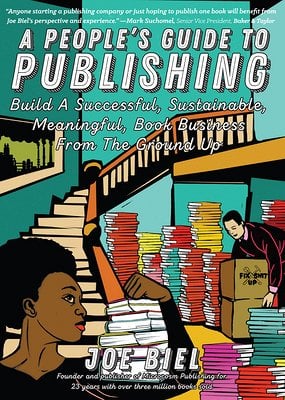
Sometimes overlooked is Joe Biel’s informal but wide-ranging A People’s Guide to Publishing: Building a Successful, Sustainable, Meaningful Book Business from the Ground Up (Microcosm Publishing, 2018). You’ll see that its subtitle follows the advice in the book: “Your subtitle should really distinguish your book from (comparable titles) and clarify your niche.” This is the sort of specific detail that some of the guides overlook. Biel is the founder and president of Microcosm Publishing, a small press guided by a strong set of principles, and doing some great work.
Another cornerstone text is Giles Clark and Angus Phillips’ Inside Book Publishing, now in its 6th edition (Routledge, 2019). It covers all the publishing sectors, though with something of a U.K.-industry focus.
On the edge of academe is the third edition of The Book Publishing Industry, authored by Albert N. Greco, Publishers Weekly’s Jim Milliot, and Robert Wharton (Routledge, 2013). Its 500 pages go deep into the “consumer” book industry, including history and operations. Notably included within is a 50-page chapter on “Marketing and Selling Books,” a topic that always calls for more coverage.
Must Read(s)
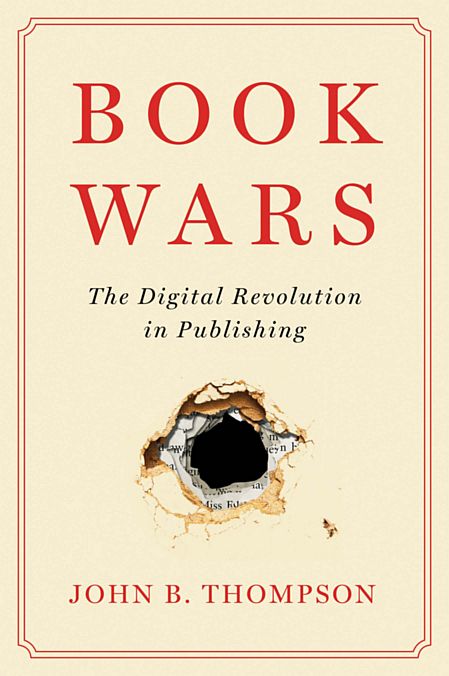
Beyond the basics, when I’m asked which book everyone in publishing must read, it’s in fact two books, both by John B. Thompson, Merchants of Culture: The Publishing Business in the Twenty-First Century (2nd ed., Polity, 2012) and Book Wars: The Digital Revolution in Publishing (Polity, May, 2021).
The books are not short — between the two you’ll be committing to some 800 pages of text. While most of the formal reviews rave about his work, Amazon reader reviews sometimes have headlines like “Useful, though dry” or “This is a long, tedious read…” suggesting, not inaccurately, that Thompson’s style sometimes drifts into the dense language of academe. But, push on — his books reward the effort — no one else has Thompson’s ability to marshal the facts into comprehensive and illuminating accounts of publishing in all its splendor.
(Thompson has an earlier volume, covering the evolution of academic and higher education publishing from 1980 to 2005, Books in the Digital Age: The Transformation of Academic and Higher Education Publishing in Britain and the United States (Polity, 2005).)
If taking on Thompson’s work doesn’t seem too daunting, you may be ready to purchase the 480-page Oxford Handbook of Publishing, edited by Angus Phillips and Michael Bhaskar (Oxford University Press, 2019). Heavily footnoted, it’s a grand collection of articles on a very broad range of topics, billed as “a comprehensive overview of the different areas and sectors of the publishing industry from both scholars and practitioners” (including John B. Thompson). On the one hand it has chapters with subtitles like “Symbiosis in the Digital Environment “ and “The Alchemy of Ideas.” On the other hand, the seven chapters in the “Publishing in Practice” section include actionable guidelines from acknowledged experts.
Is Metadata Mentioned?
I sometimes test the value of a book about publishing by whether it discusses metadata. From where I sit it’s tough to argue that you’re on top of what’s going on in book publishing without an enthusiastic embrace of the topic. The Oxford Handbook of Publishing fails in this regard — neither metadata nor ONIX appear in the index. A search through the text reveals that metadata for ecommerce is mentioned in passing, but not as a standalone topic.

When it comes to metadata for books the must-have volume is Metadata Essentials: Proven Techniques for Book Marketing and Discovery by Jake Handy and Margaret Harrison (Ingram, 2018). Earlier I co-authored, with Renee Register, The Metadata Handbook (2nd ed., DataCurate 2015), which holds up as a reference, but Metadata Essentials is the book you want when you’re ready to turn your metadata into a marketing advantage.
The Book Marketing Bible
ONIX-based metadata is covered in Alison Baverstock and Susannah Bowen’s exhaustive 500-page How to Market Books (6th ed., Routledge, 2019). Multiply the number of pages by the number of editions and you’ve got the final word about book marketing. From traditional marketing through to social media, there’s really nothing like it.
A Past Still Relevant
I recently revisited a work called The Lost World of the Craft Printer, by Maggie Holtzberg-Call (University of Illinois Press, 1992). What is notable in the (mostly dry and academic) book is that it identifies a phenomena I call “The Good Old Days that Never Were,” an idealization, almost fetishization, of times past, when industry practices were, ostensibly, somehow better than they are today.
I find it fascinating that books about publishing, published 40 or 50 years ago, many of them memoirs, not only describe an industry very similar to today’s, but also with many of the concerns that remain top-of-mind, such as corporate concentration and its drive for profits, the paucity of book review media, and the challenge of selling a profitable print run’s worth of literary fiction by a first-time author.
In preparation for this blog post, I recently reread Robert Dana’s Against the Grain: Interviews with Maverick American Publishers (University of Iowa Press, 1986). My god it’s delightful.
An example: Dana’s extended interview with James Laughlin, the founder of New Directions publishing company, includes an account of how Ezra Pound set him on the path of publishing.
In 1935 Laughlin had been serving as a sort of secretary to Pound, then living in Rapallo, Italy, hoping that Pound would help him as a writer. After several months Pound said to him “Jas, let’s face it, you’re never going to become a writer. Why don’t you go home to the States and do something useful?”
“What’s useful?” Laughlin asked.
Pound’s first idea was that he assassinate the editor of Saturday Review, who had committed the unforgivable sin of criticizing James Joyce’s Ulysses, because there was no “character development.”
Laughlin thought that unrealistic, and so Pound commanded, “Well, go back and be a publisher.”
Towards the end of the interview the topic turns to the state of publishing and the interviewer, Robert Dana comments (this being forty years ago, in 1980, a year before the release of the IBM PC), “I was talking to a friend the other day who was saying that, one day, bookstores will not stock books anymore. They will all be banked on a computer. If you want a book, you go to the store and ask for it, pay the price of the book, and it will be jet-printed overnight.”
That’s a perfect segue to the recent publication of Keel Hunt’s The Family Business: How Ingram Transformed the World of Books (West Margin Press, 2021). It offers both a (sanitized) history of the Ingram family, and an insightful account of Ingram’s rise within the book publishing industry and its impact today, including a well-honed capacity to “jet-print” books overnight, from books “banked on a computer.”
The Best Memoirs
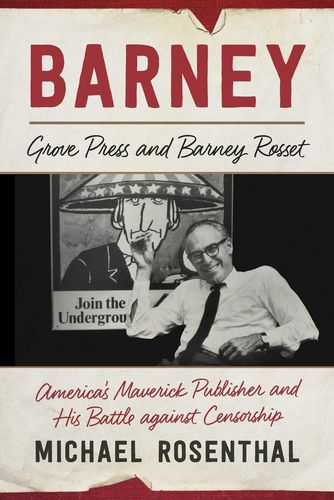
This leads nicely into the topic of book publishing memoirs. There are many. And as far as I can determine, nearly all of them by men. Three that I can recommend are Random House founder Bennett Cerf’s At Random: The Reminiscences of Bennett Cerf (Penguin Random House, 1977, 2002), Grove Press founder Barney Rosset’s, Rosset: My Life in Publishing and How I Fought Censorship (OR Books, 2017) or Michael Rosenthal’s history, Barney: Grove Press and Barney Rosset, America’s Maverick Publisher and His Battle against Censorship (Arcade, 2017) (both of the latter best read alongside the 2010 documentary film, Obscene: A Portrait of Barney Rosset and Grove Press).
The only memoir by a woman in publishing that I’ve been able to locate is Lennie Goodings’ A Bite of the Apple: A Life with Books, Writers and Virago (Oxford University Press, 2020). It is “part-memoir, part history of Virago (Press), and part thoughts on over forty years of feminist publishing.”
Canadian Publishing Revealed
The Canadian publishing industry is served by a plethora of government-funded studies, a range of reports by BookNet Canada, and just a few commercially-published books.
The More Canada reports series is in-depth, current and free of charge. Much of the research from BookNet Canada is free; their annual Canadian Book Market study sells for about $100.
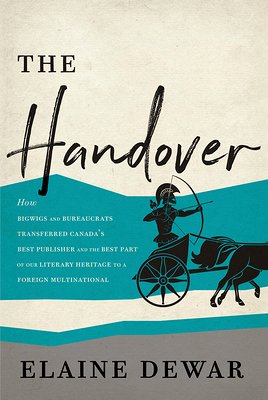
The classic history of Canadian publishing is the updated edition of Roy MacSkimming’s The Perilous Trade: Book Publishing in Canada, 1946-2006 (McClelland & Stewart, 2007). Coincidentally, the story of how MacSkimming’s publisher became yet another imprint of Penguin Random House is the subject for Elaine Dewar’s magisterial The Handover: How Bigwigs and Bureaucrats Transferred Canada’s Best Publisher and the Best Part of Our Literary Heritage to a Foreign Multinational (Biblioasis, 2017). (MacSkimming in turn reviewed Dewar’s book, not very favorably, in the Globe & Mail).
Nick Mount’s Arrival: The Story of CanLit (Anansi, 2017) covers not just the Canadian authors who came to prominence starting in the mid-20th century, but also several of their publishers.
Novels About Book Publishing
The editor of the Publishers Weekly Almanac suggested that I visit novels about book publishing. Sounded like a great idea. Zakiya Dalila Harris’s recent bestseller, The Other Black Girl (Atria, 2021), hinted that this must fertile ground for fiction. And so I set off to find the many novels with book publishing at the center. A pretty thorough search turned up less than a dozen. Of course there are lots of novels with authors at the center. And a bunch set in the newspaper publishing industry. Novels about book publishing, not so many.
New Grub Street by George Gissing, remains, arguably, the first novel about book publishing. Published in 1891, it includes the character Edwin Reardon — “a talented writer of uncommercial novels.”
My search did uncover a 2012 novel that I’m looking forward to reading, Bestseller, by Alessandro Gallenzi, himself a publisher (Alma Books, 2011). One reviewer noted that Gallenzi “slips in sound insider’s judgements on how this business works. Read it for the lowdown on the low trade.”
You’ll be served more generously by novels about journalists and journalism. Published in 1938, Evelyn Waugh’s hilarious Scoop remains a must-read (Back Bay Books, 2012 edition). Tom Rachman’s 2010 The Imperfectionists: A Novel (Dial Press, 2011 for paperback) is good fun as well.
Scholarly Publishing
I’m not paying enough attention here to scholarly publishing, which is rife with studies and reports. It’s not from lack of interest, nor from a lack of appreciation of the numerous ways that scholarly publishing is different from trade publishing. It’s just that I’ve not read as widely on the subject as I have trade publishing and I have more personal experience on the trade side of the business.
A good starting point for anyone new to scholarly publishing is Rick Anderson’s Scholarly Communication: What Everyone Needs to Know (Oxford University Press, 2018) (part of the same Oxford series as Shatzkin/Riger’s The Book Business: What Everyone Needs to Know). It’s an approachable overview. You can go deeper via Albert N. Greco’s The Business of Scholarly Publishing: Managing in Turbulent Times (Oxford University Press, 2020) or Thompson’s Books in the Digital Age, mentioned above.
Along with John Thompson, worth noting here is that Albert N. Greco, is the author to turn to for the most detailed academic-oriented analyses of book publishing, including encyclopedic statistics. Greco is particularly prolific: 16 scholarly books, 10 professional books, and 25 book chapters.
Magazines and Journals About Publishing

The publishing industry is well-served by periodicals that keep a close eye on the ever-changing industry, and they’re worth highlighting here. In the U.S. Publishers Weekly has been going strong since 1872, primarily covering trade publishing. The Bookseller is the U.K. equivalent (since 1858!), while Quill & Quire has the goods on Canadian publishing (since 1935!). Publishing Perspectives has an international focus. Three scholarly journals augment the day-to-day coverage of these magazines, including Publishing Research Quarterly, The Journal of Scholarly Publishing and Learned Publishing. There are of course many websites, blogs, newsletters, and podcasts, of varying quality, too many to describe in this post.
What’s in Your Library?
That’s my wrap-up of the best books about book publishing, 2021 edition.
What have I missed?
September 2025: A couple of others:
Dan Sinykin’s “Big Fiction: How Conglomeration Changed the Publishing Industry and American Literature,” offers a perspective on how contemporary publishing really works that I found uniquely insightful.
Michael Castleman’s “The Untold Story of Books: A Writer’s History of Book Publishing” is light and very readable, chock full of insights into publishing’s various corners: the birth of editing, the birth of book reviews, the birth of bestseller lists.